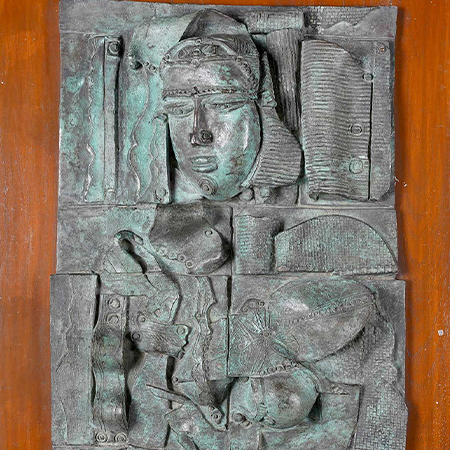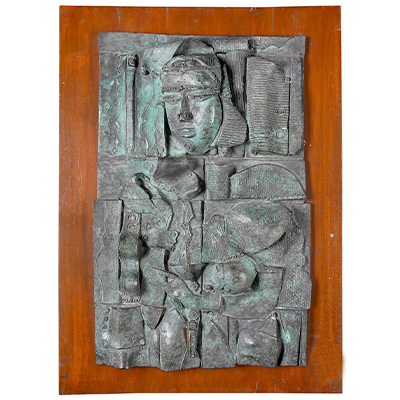Artists Profile

K Laxma Goud
(B. 1940)K Laxma Goud's life story and artistic journey are deeply intertwined with his cultural and personal experiences, which have shaped his distinctive artistic voice. Born into a family of toddy-brewers in 1940 in a rural village in Telangana, Goud’s background was far from the typical path to an art career. Despite his initial struggles with formal education, his immersion in art during his studies at the Government College of Art and Architecture in Hyderabad set the foundation for his later work. His diploma in painting and subsequent exposure to contemporary art in Baroda broadened his artistic horizons.
Goud's works often featured entwined human, animal, and natural forms, exploring complex relationships in an open and unrestrained way. His art wasn’t just a reflection of his personal erotic sensibility but also a critique of the repression he saw in urban life. This duality of living in an urban setting while recalling the more liberated, uninhibited life of the village profoundly influenced his artistic trajectory. His return to the village, spurred by his experience in Baroda, signified an important turning point in his work — one where he reconciled his rural roots with the sophistication of contemporary art practices. His art reflects raw, uninhibited aspects of human nature, and his work from the 1970s onward became known for depicting sexuality in its most straightforward form, without the symbolic undertones that were typical of other artists at the time.
K Laxma Goud’s extensive exhibition history showcases his significant presence in both the Indian and international art scenes. His solo exhibitions in major cities such as New Delhi, Mumbai, London, Kolkata, Jaipur, and Hyderabad reflect his widespread recognition and the versatility of his works. The diversity in locations suggests that his art resonates with a wide range of audiences, transcending cultural and geographical boundaries.
Additionally, his participation in notable group exhibitions, such as those in New York, Mumbai, and Hong Kong, highlights his role in the global contemporary art movement. The exhibitions at prestigious venues like the Jehangir Art Gallery in Mumbai, Galerie 88 in Kolkata, and the National Gallery of Modern Art (NGMA) in New Delhi further emphasize the esteem in which he is held within the art community.
Goud’s international exposure, especially in cities like Los Angeles and New York, suggests that his work speaks to universal themes, such as sexuality, the human form, and the connection between rural and urban life. His participation in events like the Festival of India in Geneva (1987) and exhibitions at the Worcester Art Museum (1986) also underline his global appeal and recognition.
His multiple awards from the Andhra Pradesh State Lalit Kala Academy (1962, 1966, and 1971) attest to his consistent excellence and influence in Indian art. Despite his recognition on the global stage, Goud’s roots in Hyderabad remain strong, where he continues to live and work. His ability to maintain a deep connection to his place of origin while being a part of international dialogues is one of the key aspects of his artistic journey.
Goud was indeed honored with the Padma Shri award by the Government of India in 2016.
